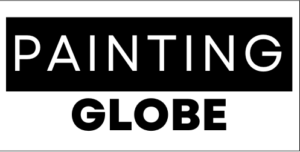Painting is not about colors, it’s also about the tools we use to bring those colors to life, and among the most crucial tools in a painter’s arsenal is the paint brush.
Choosing the right brush for your painting project is key. It is vital for getting the results you want.
The type of brush you use can impact your finishing, texture, and the quality of your work.
Understanding how to select the right brush for each project is very important.
In this article, you will gain from my decades of experience in painting as I will explore valuable tips.
These expert tips will help you choose the perfect paint brush for your next painting project.
1. Note The Type of Paint Brush You Are Going To Use
Different types of paints need different brushes.
For example, textured paint requires a hard brush to apply.
For oil-based paints, natural bristle brushes are best. Water-based paints, like emulsion and satin, are better for synthetic brushes.
Make sure you match the brush type with the paint you’ll be using for a professional result.
2. Select The Paint Brush With The Right Shape
The shape of the brush you choose can impact your painting. It affects how you apply the paint and the texture it creates on the walls.
Make sure you select the right one.
Below are some common brush shapes you should use.
1. Flat Brushes
As the name implies, these brushes are flat. They are best for large areas and straight lines.
2. Angled Brushes
The angled brushes are great. Recommend them for cutting in and creating sharp edges.
They are also idle for color separation in angle areas where two colors meet
3. Round Brushes
Round brushes can do the magic in your painting project.
Recommend them for detail work, curves, and blending.
4. Filbert Brushes
Filbert brushes combine the characteristics of flat and round brushes.
This unique feature makes them versatile for various painting techniques.
make sure you select the right one.
5. Fan Brushes
Fan brushes create texture, blending, and other special effects in painting.
6. Detail Brushes
These brushes are wonderful brushes made for intricate details and fine lines.
3. Examine The Paint Brush Bristles
The bristles play a significant role in applying paint. They also affect the finish.
To enable you to select the right one for your painting project, Here are some key considerations.
1. Natural Bristles
Brushes with natural bristles are best for oil-based paints. They are more absorbent and provide smoother application.
They work for varnishes and stains too.
2. Synthetic Bristles
Brushes with synthetic bristles are best for water-based paints. This is because they keep their shape and stiffness.
They are also easier to clean and maintain, and these enable many reuse.
4. Consider the Paint Brush Size
The size of the brush you use is also a key determinant of the success of your painting project.
So, examine the size of the area you’ll be painting when choosing the brush size.
Larger brushes cover more area . Smaller brushes are better for detail and complex designs.
5. Select Brushes With Comfortable Handles
Pick brushes with comfy handles. But, don’t overlook the importance of a comfy handle. This is especially true for long painting sessions.
Look for brushes with ergonomic handles. They provide a comfy grip and reduce hand fatigue.
These will help you not to wire giving you more comfortable time to paint on the go.
6. Examine the Surface Texture of The Place You will be Painting
The surface texture of the place you’re painting on also influences the type of brush you should use.
For rough surfaces, choose brushes with stiffer bristles that can penetrate crevices.
Smooth surfaces may need softer brushes for even application.
7. Buy Quality Paint Brush
It can be tempting to choose cheap brushes. But, I recommend you buy good ones.
Purchasing high-quality brushes can improve your painting experience and the outcome.
Good brushes last longer. They keep their shape well and give a pro paint finish.
8. Examine The Flexibility and Spring of the Brush
A quality brush should have flexibility and springiness.
Examine the brush by pressing down on the bristles to see how they respond.
A brush with good flexibility and spring will bounce back into shape. This allows for smoother strokes and better control.
9. Always Clean and Store Your Brushes
After each use, clean your brushes according to the type of paint used.
For oil paints, use tina or petrol to wash them. For water-based paint, use clean water with detergent to wash and dry it.
, and store them to keep their shape. This prevents damage.
10. Why You Should Use The Right Brush for Your Painting Project
1. Professional Finish
A good brush holds more paint and distributes it onto the surface.
This leads to a smoother, more pro finish. It’s better than using a bad or worn-out brush.
You’re painting walls, furniture, or ceilings. A good brush ensures the paint goes on .
2. Professional Result
Using the right brush enhances the quality of your work to a professional level.
We will achieve a smooth finish, precise lines, and consistency.
A good brush can improve your painting’s look. It will leave a lasting impression on viewers.
3. The Right Brush Less Waste
Designers create good brushes to cut paint wastage. They do this by ensuring proper paint distribution and coverage.
They absorb the right amount of paint needed for each stroke and also reduce excess drips and spills.
This not only saves paint but also contributes to a cleaner and more painting process.
4. They Enhance Durability and Longevity
Investing in a good quality brush may seem like a higher upfront cost, but it pays off in the long run.
Durable materials make quality brushes that can withstand repeated use and cleaning.
They keep their shape and performance over time. This saves you money on frequent replacements. It ensures even results in your painting projects.
5. They Promote Timeliness and Efficiency
A good brush improves your work. It also speeds up painting.
With better paint retention and application, you can cover larger areas in less time.
This is a big help for professionals. It is also for anyone who wants to finish their painting project on time.
Conclusion
Follow these expert tips. Choose the right brush. Then, you will get a professional painting finish.
These tips will help you to improve your painting. They will help you to achieve professional-looking results.
Remember, the key to your pro finish is picking the right brush for your project.
Hope these expert tips were helpful.
Happy painting!































hello there!
thank you for contacting me.
i will go through your referral and get back to you in due time.
thank you